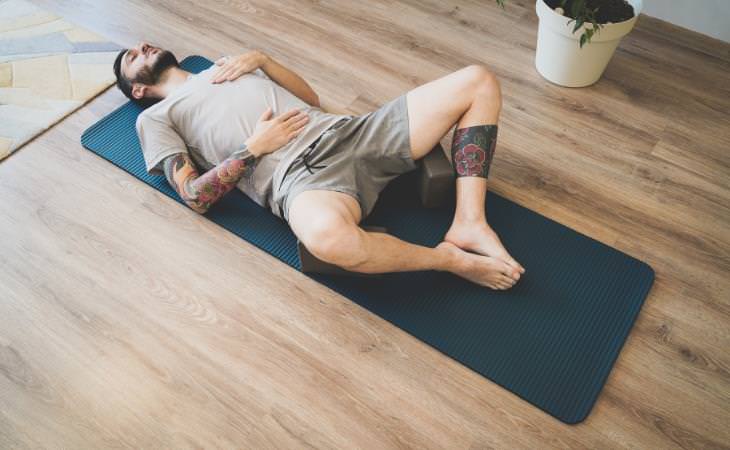How Is Diaphragmatic Breathing Beneficial?
A 2017 study found that diaphragmatic breathing can help reduce the levels of the stress hormone cortisol in the body. Therefore, this exercise can be useful in alleviating symptoms of stress and anxiety.
When we are under stress or become anxious, we tend to take short breaths using our shoulders instead of our diaphragm to move air in and out of our lungs. This disturbs the balance of gases in the body. Also, our heart beats faster, and our breathing rate increases.
During diaphragmatic breathing, you consciously become aware of your breathing and regulate its depth and rate. By doing so, you lower your likelihood of spiraling into a panic when you’re anxious or stressed.
Moderate evidence also suggests that diaphragmatic breathing can help improve the quality of life for people with asthma. However, asthma sufferers should first perform the exercise under the guidance of a healthcare professional.
Related: Reduce Your Anxiety with This Easy Technique
How to Practice Diaphragmatic Breathing
Diaphragmatic breathing is best practiced in a relaxed and safe environment at home. Follow the instructions below to perform this breathing technique.
1. Lie down on your back on a flat surface or in bed. You can place a pillow under your knees and under the head to keep your body comfortable.
2. Place one hand on the middle of the upper chest and the other just below your rib cage but above the diaphragm.
3. Take a deep breath from your abdomen and count to three. As you inhale, you should feel your stomach rise. Make sure the hand on your chest doesn’t move. This will allow the diaphragm to work more effectively with your abdomen instead of your chest.
4. Now exhale through pursed lips while counting to three. As you exhale, your stomach should fall back down. The hand on your chest should stay still. The hand on your stomach should rise and fall as your diaphragm expands and contracts with each breath.
5. Continue this exercise for five to ten minutes. With each breath allow any tension in your body to fade away.
At first, you might get tired during the exercise. But don’t give up, and keep at it. With practice, it will become easier, and you will feel better after each session. To make things more comfortable, consider playing some light music. For best results, practice this breathing exercise for 5–10 minutes at a time at least two to three times a day. You can gradually increase the amount and can even progress to doing this exercise sitting up.
Note: People with lung conditions like Chronic Obstructive Pulmonary Disease (COPD) or asthma should consult with their doctor before beginning this exercise.
Share this article with all your loved ones...
 Go to BabaMail
Go to BabaMail





















































